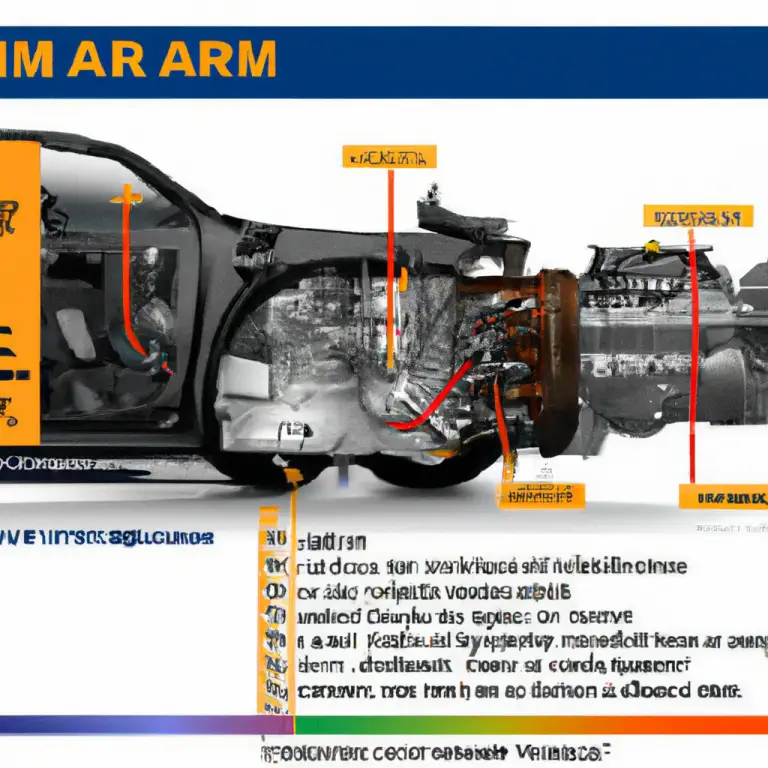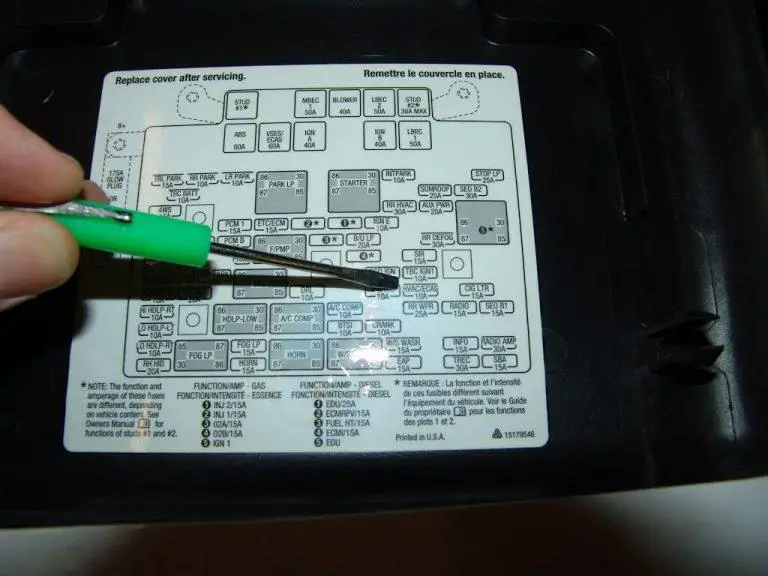How To Bypass O2 Sensor On Ford F150
Last Updated on by David Jon
Navigating the complex world of automobile repair can be daunting, especially when tackling the intricacies of the Ford F150’s oxygen (O2) sensor. Fear not, however, as we aim to equip Ford owners, DIY enthusiasts, mechanics, and aficionados with the knowledge necessary for such a task. In this comprehensive guide, readers will learn how to bypass the O2 sensor in their Ford F150, simplifying their truck maintenance process and potentially saving great amounts of time as well as hard-earned money.

Understanding the O2 Sensor in a Ford F150
Description and Function of the O2 Sensor
Built right into your Ford F150, the O2 Sensor, also known as an oxygen sensor, is a critical part of your vehicle’s emissions control system. This little device measures the amount of unburned oxygen in the exhaust as it leaves the engine, providing feedback that helps the onboard computer optimize the air-fuel mixture in real-time. It forms an essential part of the engine management function in ensuring high engine efficiency, reduced emissions, and improved power output.
Reasons Behind O2 Sensor Failure
Multiple reasons can cause the O2 sensor in your Ford F150 to fail. The leading cause is usually contamination, which can occur due to factors like lead, silicone, oil ash, or even coolant. Long-term exposure to extreme temperatures can also cause failure, as the sensor’s performance can deteriorate over time due to the high heat environment in which it operates. Over-rich fuel mixtures, electrical problems, or physical damage are other potential causes of O2 sensor failure.
Symptoms of a Faulty O2 Sensor
A malfunctioning O2 sensor triggers issues that adversely impact your vehicle’s performance. Symptoms can range from reduced fuel economy through to misfiring or rough idle. Difficulty starting and a decrease in power or acceleration can also be signs of a faulty O2 sensor. Furthermore, you might notice a strong smell of fuel coming from the exhaust or a check engine light on the dashboard.
Importance of the O2 Sensor
Contribution to Vehicle’s Performance
The responsibility of the O2 sensor is monumental in maintaining a vehicle’s performance. It effectively governs the efficiency of the engine’s combustion process, influencing factors like fuel efficiency, power output, and smooth running. Without a functional O2 sensor, the air-fuel mixture used by the engine may be too lean or too rich, causing problems like misfires and inefficient fuel consumption.
Impact on Environment
The O2 Sensor also significantly affects the environment. By optimizing the engine’s fuel use, it helps minimize harmful emissions released into the environment, such as nitrogen oxide, carbon monoxide, and hydrocarbons.
Effects on Fuel Economy
Significantly, the O2 Sensor is a significant contributor to a vehicle’s fuel economy. It is responsible for providing the optimal air-fuel mixture required to reduce fuel consumption. Without it, or if the O2 sensor is compromised, the engine may consume more fuel, leading to increased running costs.
Risks Associated with Bypassing the O2 Sensor
Implications on Car’s Performance
Bypassing the O2 sensor on your Ford F150 can have adverse implications on the vehicle’s performance. With the sensor bypassed, the engine control unit (ECU) lacks the necessary data to provide the correct air-fuel mixture, leading to increased fuel consumption or even potential engine damage over time.
Possible Legal Repercussions
There can also be legal repercussions associated with bypassing the O2 sensor. Given its function in controlling harmful emissions, removing or bypassing it may mean non-compliance with environmental regulations. In many jurisdictions, such an action might attract fines or even result in a failed vehicle inspection.
Environmental Impact
Bypassing the O2 sensor, as noted, can lead to an increase in harmful emissions, such as CO2, NO2, and particulates. This is detrimental to the environment, leading to problems like air pollution and contributing to climate change.

Why Choose to Bypass the O2 Sensor
When Replacement isn’t Immediately Possible
Despite the potential risks, there are certain situations where bypassing the O2 sensor may be deemed necessary. If a replacement sensor is not immediately available or affordable, a temporary bypass might be a consideration to maintain limited vehicle function
Temporary Solution for Ongoing Issues
In some cases, repeated issues with the O2 sensor might lead a person to decide to bypass it temporarily while troubleshooting the recurrent problem. This is usually a short term solution before a more permanent one can be implemented.
Situations When Bypassing is a Valid Option
It’s important to note that legitimate reasons for bypassing the O2 sensor do exist but they tend to be situation specific and generally not a long-term option. They might include instances where a vehicle is being used solely off-road or for hobby-related activities, and therefore subverting environmental regulations is not a concern.
Choosing the Correct Bypass Method
Choosing the correct bypass method is crucial to ensure continued vehicle operation, albeit it would likely be a compromised one.
Spark Plug Non-fouler Method
The Spark Plug Non-fouler method entails using a spark plug non-fouler to shroud the O2 sensor, thus reducing the amount of exhaust gases it can detect.
O2 Simulator Method
O2 Simulators imitate the signal sent by the O2 sensor to the ECU, tricking it into thinking that a sensor providing valid data is connected.
ECU Tuning Method
ECU tuning changes the settings of the Engine Control Unit, effectively ignoring O2 sensor input. This method is complex and should be conducted by a professional as it involves modifying your vehicle’s electronics to a certain extent.
Tools Required for Bypassing O2 Sensor
List of Necessary Tools
For bypassing the O2 Sensor, you’d usually require essential tools such as a socket set or wrench suitable for the sensor, spark plug non-fouler or O2 simulator, depending on the method chosen, and basic hand tools.
Where to Buy These Tools
These tools are readily available at any automotive parts store, and many are also available online or in large department stores with a substantial automotive department.
How to Use Each Tool
Bypassing the O2 sensor requires some level of mechanical knowledge and understanding of how to use each tool. Generally, the sensor is removed, the chosen bypass method is implemented, and then the sensor is replaced.
Steps to Bypass the O2 Sensor
Preparation Procedures
Preparation is essential to any mechanical procedure. Ensure you have the necessary tools and equipment at hand, are wearing protective gear, and understand the process.
Detailed Step-By-Step Guide
The step-by-step guide to bypassing the O2 sensor will vary based on the method chosen. However, it usually involves locating the sensor, disconnecting it, implementing the chosen bypass solution, and reconnecting the sensor.
Post-Bypass Checks and Balances
After bypassing, it’s crucial to check for any warning lights or changes in vehicle performance. Always monitor your vehicle closely in the weeks following a bypass.
Alternative Solutions to Bypassing the O2 Sensor
Possible Quick Fixes
Before bypassing, consider possible quick fixes like cleaning the sensor or ensuring it is correctly tightened as it might just be a case of a loose or dirty sensor.
How and When to Replace an O2 Sensor
Replacing the O2 sensor should always be the first consideration over bypassing. Sensors can vary in cost and complexity to fit, and so this decision will depend on your specific circumstances.
Troubleshooting Other Potential Issues
Instead of directly resorting to bypassing the O2 Sensor, it’s sometimes beneficial to check for other potential problems, like issues with the ECU or electrical problems that might be causing the sensor to fail.
Long-Term Implications of Bypassing the O2 Sensor
Effect on Vehicle’s Overall Performance
Long-term bypassing of the O2 sensor can have serious, negative consequences on a vehicle’s overall performance, including increased fuel consumption, reduced power output, and potential damage to the engine.
Potential Damage to Your Vehicle
Operating a vehicle without a functional O2 sensor in the long-term might lead to expensive damage parts of the engine, such as the catalytic converter or the ECU.
Lifespan of a Bypassed O2 Sensor
A bypassed O2 sensor will likely have its lifespan reduced due to the abnormal operating conditions.
Conclusion: Is Bypassing the O2 Sensor Worth it?
Comparison of Pros and Cons
While there may be short term benefits to bypassing the O2 sensor, the long-term effects, both for the vehicle and the environment, generally outweigh the advantages.
Practicality and Logic Behind the Decision
From a practical perspective, it doesn’t make sense to bypass the O2 sensor due to the potential damages, decreased performance, and potentially illegal repercussions, except in very specific cases.
Considerations for Your Specific Vehicle and Scenario
The decision to bypass should be considered carefully, taking into account the specific circumstances at hand – such as if a replacement sensor is unavailable or if the vehicle isn’t used on public roads. Ideally, the O2 sensor should be replaced if faulty, and regular maintenance should be performed to ensure a long, trouble-free life for your Ford F150.




